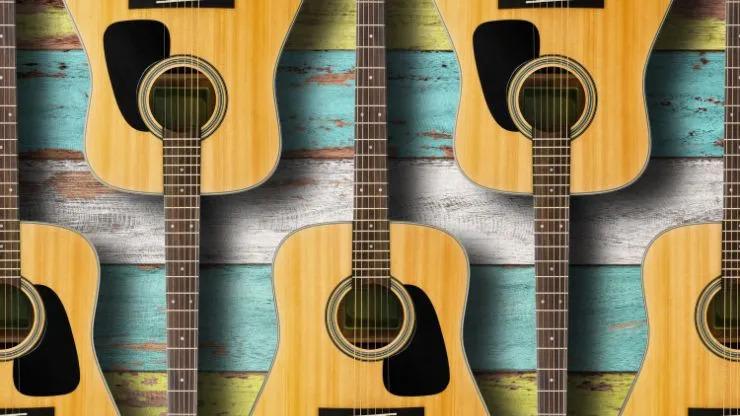What Difference Does a Guitar’s Body Shape Make?
There’s no shame in saying that aesthetics are an essential consideration in the guitar-buying process. Who doesn’t want a flash new axe when spending their hard-earned money? But choosing a guitar body type is more than just about looks. How you play and what kind of sound you want to make means that specific body shapes will be better suited to your needs. Do you play brooding acoustic songs that need a dynamic range and volume that can fill a concert hall? Do you shred like the best of them and need unfettered fret access? Do you stand for hours on end and worry about being able to manage a heavier guitar in extended play sessions? The body type that you pick will affect all these scenarios and more.
What Are the Best Acoustic Guitar Body Shapes?
Modern guitars can trace their lineage to the instruments created by Antonio Torres Jurado, a 19th-century Spanish luthier. It’s not surprising then that guitars have evolved into a wide range of body shapes in the nearly two hundred years that have since passed. The right acoustic guitar body type depends on how you play, the music you want to make, and how many people you might be performing in front of. But whatever your needs, here’s our list of the best acoustic guitar body shapes to help you pick the perfect instrument.
Dreadnought

Arguably the most common guitar shape, the dreadnought was created by Martin Guitars in 1916. Its bulky form means the guitar has a large and resonant internal cavity, resulting in a big and loud sound with expansive bass and bright treble. They are large instruments, though – a dreadnought might not be the most comfortable body type for smaller guitarists and children.
The dreadnought has been accepted by most acoustic manufacturers, from budget models all the way through to expensive premium designs. It’s also escaped genre barriers and is as likely to appear in a country & western artist’s hands as a pop star or rocker.
Jumbo

Popularised by Gibson a little after the introduction of the dreadnought, the jumbo guitar also features a large body cavity that produces a big and loud sound and is ideal for strumming. As the biggest acoustic body type, its booming volume is typically louder than a dreadnought, albeit at the expense of some dynamic range – jumbos often have less mid-range scoop than dreadnoughts.
While jumbos are bigger than dreadnaughts, they’re also curvier, resulting in a slimmer waist. You might find that this helps with playability, although experiences can vary from player to player.
Auditorium

The auditorium or orchestra guitar is another innovation from Martin Guitars, and like the dreadnought is one of the most popular acoustic body types – but that’s where the similarities end. While large instruments, auditorium guitars are more diminutive than dreadnoughts and feature a more cinched waist and less body depth, making them more comfortable to play. Their reduced body cavity means that they also have a different sound than dreadnoughts, with more emphasis on trebles and a generally brighter sound.
Auditorium guitars are quieter than dreadnoughts, but their volume and brighter sound make them the perfect companion to fingerstyle playing.
Classical
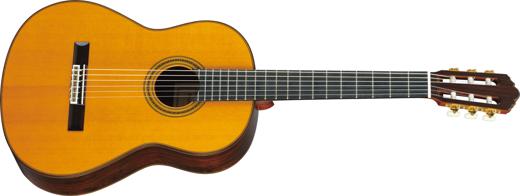
A popular pick for playing, unsurprisingly, classical music, the classical guitar is one of the more unique acoustic guitar choices. Smaller than a dreadnought, it famously features nylon strings for a smoother, softer sound. Classical guitars also typically have a wider neck, a flatter fretboard, a slightly longer scale, and open-slotted tuners.
While strummers are probably better served by a dreadnought, classical guitars are perfect for a range of fingerstyle playing techniques, from softer fingerpicking to more aggressive flamenco.
Parlour
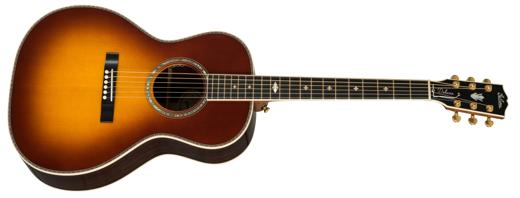
Parlour (or parlor) guitars are the smallest standard acoustic guitar size available. Their popularity peaked in the early 20th century before gradually phasing out of widespread usage since the 1950s. Despite being less trendy nowadays, parlour guitars are still available and are another excellent choice for fingerstyle players.
They don’t have the dynamic range or volume of dreadnoughts, but parlour guitars have an intimate and balanced sound with excellent mid-range performance. Physically, their small size also allows for increased comfort while playing.
Travel
Similar in size and sound to parlour guitars, travel guitars are ideal for those who spend time on the road and need a worthy road warrior that they can easily transport. You aren’t going to get dreadnought-like volume out of a travel guitar, and they often feature a smaller scale length and laminated constructions that aren’t as high in quality as a traditional full-size acoustic guitar. But, if a compact size for headache-free travel is your primary concern, then a travel guitar could be perfect for you.
What Are the Best Electric Guitar Body Shapes?
When it comes to electric guitar body shapes, the differences are more to do with ergonomic and aesthetic preferences, with less variation in tone than what is offered by different acoustic guitar body types. Some body styles may traditionally have specific pickup configurations. But, while pickups are one of the most critical parts of your electric guitar tone, you can usually replace them according to your preferences.
So, whether you’re in the market for a vintage guitar body for playing the blues or something suitably kvlt for your frostbitten black metal band, here’s our list of the best electric guitar body shapes.
Single Cutaway
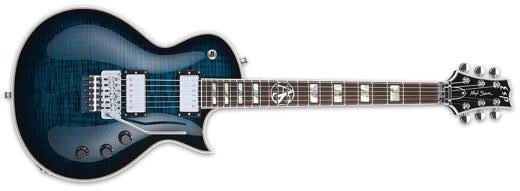
When the average person pictures an electric guitar, there’s a good chance they will think of some form of single cutaway guitar. Single cutaway bodies feature an indentation in the body immediately beneath the neck, allowing for better access to the upper frets. While this body type is one of the most common, it was arguably popularised by Gibson and their famous Les Paul model.
The tone in an electric guitar is defined mainly by the electronics and wood used in its construction. However, a guitar with a single cutaway typically has slightly stronger bass and mid-range performance than a double cutaway guitar.
Double Cutaway

Another of the most popular body types, it might not come as a surprise to learn that double cutaway guitars feature two body indentations, as opposed to the one indentation of a single cutaway guitar.
As per the single cutaway, double cutaway instruments also allow for better upper fret access. However, the second indentation provides better access for the thumb above the guitar neck.
With less wood in the body, double cutaways tend to be a little lighter than a single cutaway, while tonally, they offer a tighter sound with more treble in the mix.
S-Style

The S or Strat-style guitar is technically a double cutaway body. But, thanks to the massive impact of Fender’s ground-breaking Stratocaster model, the S-style is often referred to as a unique body type. The offset double cutaway of S-style guitars is perfect for lead players who need easy access to higher frets. They also offer bevelled tops for enhanced comfort while playing.
S-style guitars typically feature three single-coil pickups and a tremolo bridge. But this much-copied body type has been reimagined by many guitar makers who have put their own touch on the classic design, such as adding humbucker pickups.
T-Style

Another timeless guitar design brought to you by Fender. The T-style guitar comes from the popular Telecaster, one of Fender’s first guitar models and the world’s first mass-produced guitar. T-style guitars feature a single asymmetric cutaway that’s shallower than the cutaway on a Strat, but still allows access to higher frets.
Additionally, instead of the standard three single-coil pickups seen on Strats, Telecasters have a pretty unique pickup configuration. The bridge pickup is attached to a metal baseplate, giving it a brighter, more powerful sound with plenty of trebles. Meanwhile, the neck pickup is fully encased in a metal cover. While this reduces treble and volume slightly, it gives the pickup a warm, dark tone that blends nicely with the bridge pickup.
Offset
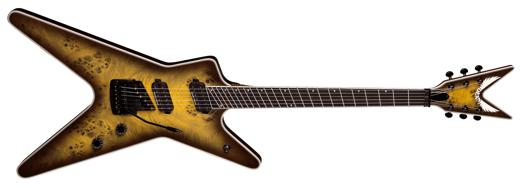
Another body type epitomised by Fender, the offset guitar is most famously represented by the Jazzmaster guitar. Many players consider offset guitars a perfect blend of fret access and well-balanced weight.
Traditionally, offset guitars such as the Jazzmaster or the Fender Jaguar would craft their sound using a pair of single-coil pickups. While this is still the default option, nowadays, Fender and plenty of other guitar manufacturers also offer the option of a couple of humbuckers in their offset designs.
V-Style
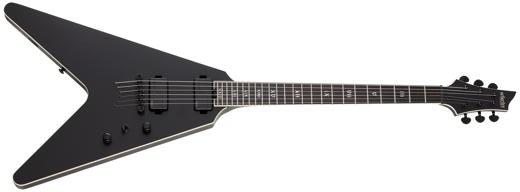
Gibson first released the ground-breaking Flying V in 1958, and although initial take-up was low, it didn’t take long for the eye-catching model to grow in popularity, changing the face of metal guitars along the way! After being adopted by the likes of K.K. Downing of Judas Priest and Michael Schenker, other manufacturers began offering their take on the innovative design. Of particular note are the more angular and aggressive-looking iterations from ESP and Jackson, famously used by players such as Randy Rhoads, Alexi Laiho, and James Hetfield and Kirk Hammett of Metallica fame.
Hollowbody
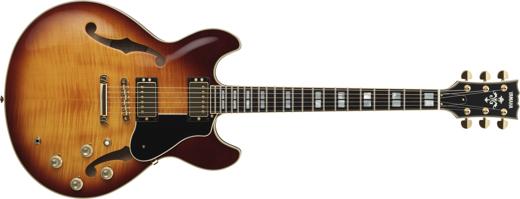
A semi-acoustic, or hollowbody, guitar combines some of the best elements of both acoustic and electric instruments. Their hollow design provides resonance like that heard in acoustic instruments, while onboard electronics mean they can be amplified. Popular in jazz and blues, hollowbody guitars usually feature F-holes and are known for producing clear and well-rounded tones. Additionally, semi-hollowbody guitars are also available and feature the addition of a centre block of wood in the body cavity, which helps to minimise unwanted vibrations and reduce feedback at higher volumes.
Find Your Perfect Guitar Body Shape
So, now that you know the right guitar body type for you, head over to our fantastic Finder tool to see just how easy we make finding your next guitar. Choose your guitar requirements, including body shape, electronics, and price, and search through our specially selected list of guitars that perfectly match your needs.
